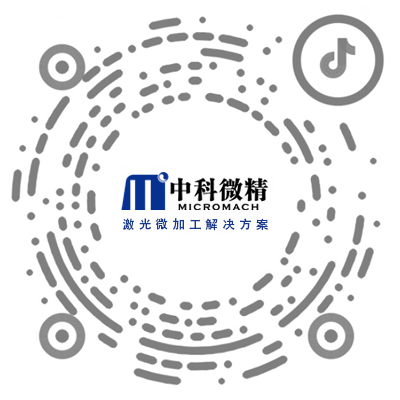On the morning of August 20, astronauts Nie Haisheng and Liu Boming of Shenzhou-12 embarked on their second extravehicular activity. During the mission, a rare scene was captured by the camera on Liu Boming's suit—Nie Haisheng standing on the robotic arm, akin to "taking a space walk."
It is understood that the astronauts were using the extravehicular spacesuit camera developed by the Xi'an Institute of Optics and Precision Mechanics of the Chinese Academy of Sciences (hereinafter referred to as "Xi'an Optics"). This equipment can operate continuously for more than six hours and has overcome many environmental reliability challenges.
With the emergence of numerous innovative achievements in recent years, Xi'an Optics has remained steadfast as a pioneer in scientific and technological innovation.
On February 15, 2015, General Secretary Xi Jinping visited Xi'an Optics for a research visit. "Core technologies cannot be begged for; they must be achieved through self-reliance," he said after carefully examining the industrialization achievements. He encouraged everyone, "Scientific and technological personnel should establish a strong sense of responsibility and confidence in innovation."
How can breakthroughs from "0 to 1" be achieved? What progress has been made in the application of scientific research results? Recently, this newspaper's reporter visited Xi'an Optics to explore the stories of innovation therein.
Innovative Breakthroughs - Focusing on Core Technologies
Upon entering the scientific and technological achievement exhibition hall on the first floor of Xi'an Optics, an eye-catching slogan stands out: Boosting scientific and technological innovation, creating excellent enterprises, and helping China reclaim its place at the top of the world.
As the "national team" in China's optical and precision machinery research field, Xi'an Optics, founded in 1962, is a comprehensive research institute focused on strategic high-tech innovation and applied basic research. Over the past 50 years, Xi'an Optics has successfully completed related tasks for national major strategic scientific research such as "the two bombs and one satellite" and manned spaceflight, making outstanding contributions to scientific and technological innovation and progress.
In recent years, to promote high-quality development and safeguard national security, Xi'an Optics has taken the initiative and actively strengthened original innovation in basic research, working hard to master key core technologies.
In early summer, in a laboratory at Xi'an Optics, Yang Jianfeng, the 52-year-old director of the Lunar and Deep Space Exploration Technology Research Laboratory, was engrossed in developing a hard X-ray imager. This is one of the three payloads of China's first comprehensive solar exploration satellite, ASO-S, specifically responsible for "taking photos" of the sun and observing solar flares.
In fact, compared to solar observation, Yang Jianfeng, who has been engaged in the development of spaceborne optical remote sensing instruments for more than 20 years, has previously been more involved in equipping Chang'e projects with "personal photographers."
In January 2019, Chang'e-4 achieved the first soft landing and rover inspection of a spacecraft on the far side of the moon in human history, carving China's footprint on the moon's far side.
The mutual imagery of the Chang'e-4 lander and rover clearly showed the surrounding lunar far-side terrain and morphology, successfully unveiling the mystery of the ancient far side of the moon. This scene was captured by the panoramic camera developed by Yang Jianfeng as the chief designer.
Yang Jianfeng recalled that the two panoramic cameras carried by Chang'e-4 were both installed on the rover's mast, relying on the mast's left-right rotation and up-down tilting to achieve a wide range of panoramic imaging. "The distance between the two panoramic cameras is 270 millimeters, like a human's two eyes, capable of carefully observing the lunar terrain and morphology. When the rover moves forward, it can also judge distance, achieving the effect of 'what you see is what you get.'"
To ensure the stable and reliable in-orbit operation of the Chang'e-4 panoramic camera, Yang Jianfeng led his team to overcome multiple engineering challenges step by step during the development process.
For example, to address the issue of lunar dust potentially causing underexposure of the panoramic camera, Yang Jianfeng was well-prepared.
Yang Jianfeng specifically added an automatic exposure control function to the camera: when lunar dust dirties the lens, the automatic exposure function of the panoramic camera will increase the exposure time, thereby not affecting normal operation. At the same time, exposure control can also be remotely controlled from the ground. These two measures together effectively ensured the successful completion of the mission.
"In recent years, I have increasingly felt how proud it is to personally participate in China's space program," Yang Jianfeng said with emotion. "As China's space exploration in outer space continues to deepen, we must still adhere to independent research and development and self-reliance, striving to solve those core technologies that 'cannot be bought,' living up to the entrustment of the times and the people."
The ability of core technologies to bear fruit on their "branches" cannot be separated from the support of the thick trunk and extensive root system, which are basic research.
"In layman's terms, our team mainly solves the problem of making tiny objects 'see more clearly,'" said Yao Baoli, one of the researchers engaged in basic research at Xi'an Optics. After long-term theoretical and technical research, he led his team to develop the first domestically produced structured illumination super-resolution microscopic imaging system with independent intellectual property rights, achieving an international leading level of resolution of 90 nanometers in similar technologies.
Over the years, Yao Baoli's team has been dedicated to the research of new optical imaging theoretical methods, publishing more than 200 research papers in international journals and obtaining 18 national invention patents.
"In recent years, we can clearly feel that the atmosphere encouraging basic research has become stronger, the instruments and equipment are more advanced, and we scientific and technological workers have more motivation!" Yao Baoli said.
"Basic research is the foundation of scientific and technological innovation," said Ma Caiwen, director of Xi'an Optics. He introduced that in the past three years, Xi'an Optics has invested 60 million yuan in platform construction and project funding in the field of basic research. "In the future, we will continue to focus on key core technologies, solidly carry out basic research, and increase support for basic scientific research."
Scientific Research Direction - Meeting People's Livelihood Needs
The goals of scientific research should not only face the frontiers of world science and technology and major national needs but also the main battlefield of the national economy and people's lives and health.
In recent years, Xi'an Optics has adhered to people's livelihood orientation and market demand, striving to convert innovative achievements into tangible technological products.


 微信公众号
微信公众号
 抖音
抖音
 视频号
视频号